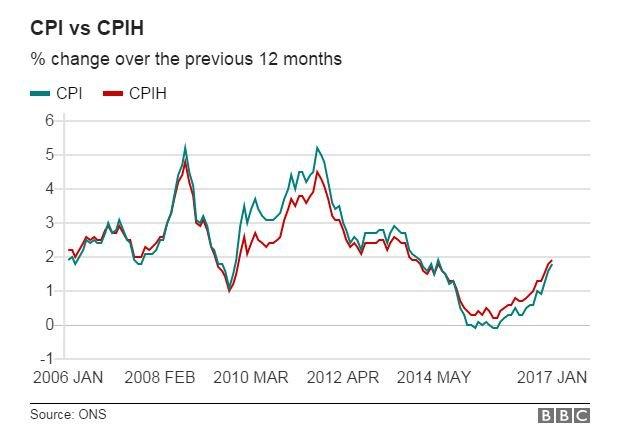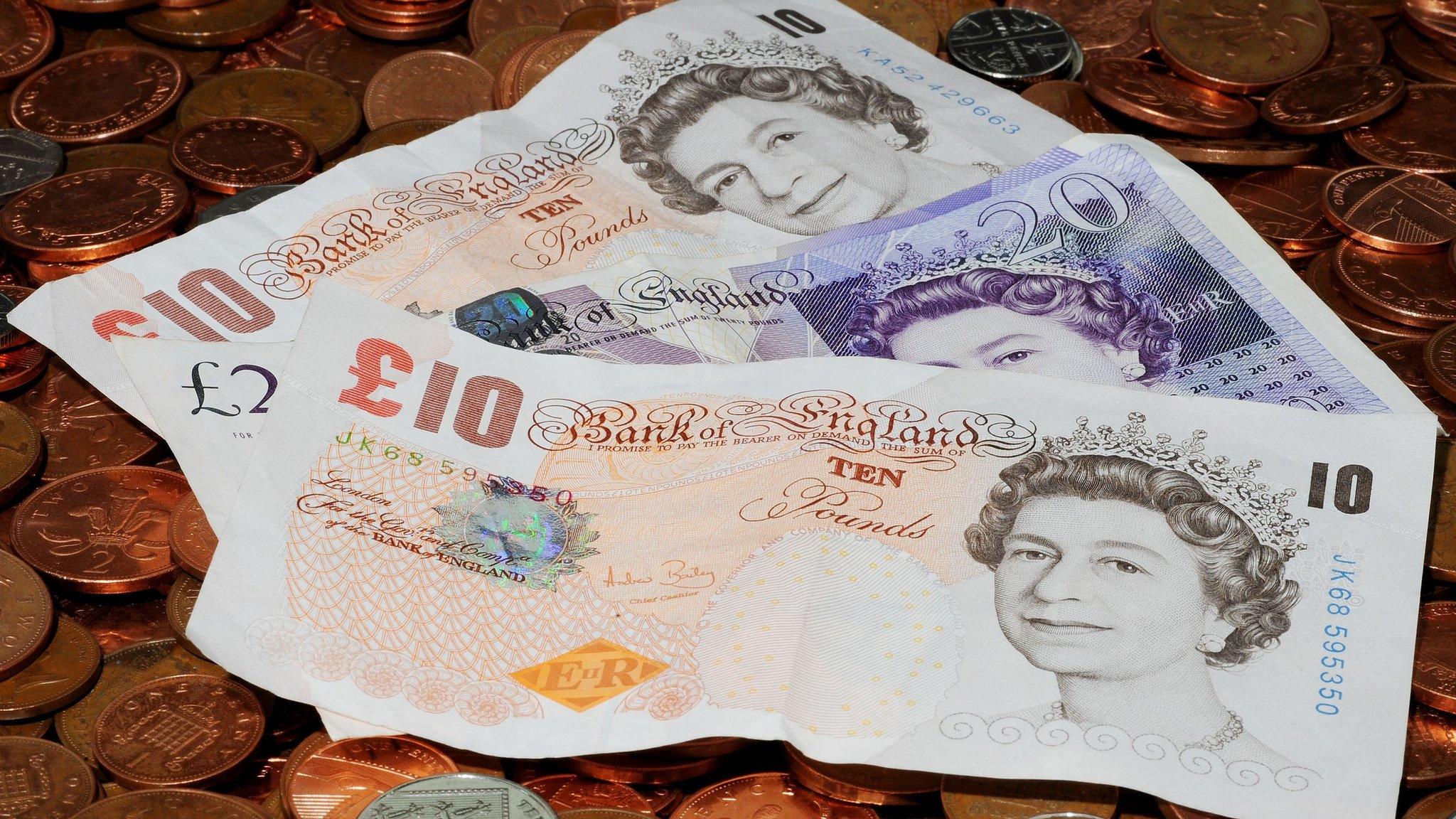Reality Check: What's this new measure of inflation?
- Published

Tuesday's inflation report from the Office for National Statistics (ONS) will not be the same as previous ones.
The ONS is changing its headline rate of inflation for the first time since it moved from RPI to CPI in 2003.
The new headline rate is CPIH, a measure of how much prices are rising that, unlike CPI, takes into account owner-occupiers' housing costs and council tax.
The switch from CPI to CPIH is a result of a review of inflation measures, external by Paul Johnson from the Institute for Fiscal Studies. He says that including such costs gives a better answer to what is going on with inflation.
Jonathan Athow, who is in charge of economic statistics at the ONS says that CPIH, external "is the most comprehensive measure of consumer inflation".
How are owner-occupier housing costs calculated?
The ONS uses the amount that you would have to pay to rent a property as a proxy for owner-occupier housing costs.
The argument is that if mortgage costs go up or house insurance goes up, rent will also go up.
While the cost of renting is not the same as the cost of owning, you can see why you might argue that the changes would be the same (leaving out costs borne by people owning second homes for rental as opposed to first homes).
CPIH also includes council tax, which CPI does not.
Last month, CPIH was slightly higher than CPI (2.0% vs 1.8%) but on average over the last decade CPIH has actually been slightly below CPI.
It is not obvious so far that one will consistently be higher that the other in the long term.
No kitemark
But there is a problem.
The ONS gets a National Statistic kitemark from its regulator, the UK Statistics Authority (UKSA) for indicators that meet its code of practice, external.
CPIH doesn't have a kitemark. It lost the designation, external in August 2014, just over a year after it started publishing the measure, as a result of concerns about the way it was calculating owner-occupiers' housing costs.
The ONS announced in November that CPIH would be its headline inflation figure starting with the bulletin to be published in March.
At the time it hoped that CPIH would have been redesignated as a National Statistic in time for the change.
But the UKSA announced earlier this month, external that it still wasn't happy with CPIH and will not consider redesignating it again until 25 April.
So we are left in the strange situation that for at least two inflation reports, the ONS will be headlining one of its highest-profile releases with a statistic that its regulator says is not good enough.
And it's not just the UKSA that is currently refusing to sign up for CPIH. The Treasury is one of the most important users of the CPI figures, using them to adjust some benefits, inflation-linked bonds, and crucially using it as the basis for the inflation targeting carried out by the Bank of England's interest rate-setters.
The Treasury says it is not adopting CPIH as its preferred measure and that it will not do so until it has regained its designation and then bedded in for a while as a National Statistic.

What are the key measures of inflation?
CPI
Has been the ONS headline measure of inflation since 2003
The measure targeted by the Bank of England's rate-setters
Calculated based on collecting the prices for a basket of goods
Goods are bunched into categories and then weighted based on how often they are bought
CPIH
Adds owner-occupier housing costs and council tax to CPI
Otherwise calculated in the same way and with the same basket as CPI
Has been published since 2013 but ONS has calculated it back to 2006
RPI
Was the headline measure of inflation until 2003
Uses a different basket of goods and different formulae to CPI
Includes mortgage interest payments and council tax
The formulae used are no longer considered best practice so RPI is not a National Statistic
The ONS discourages its use

- Published17 March 2017

- Published14 February 2017

- Published10 November 2016

- Published8 January 2015
